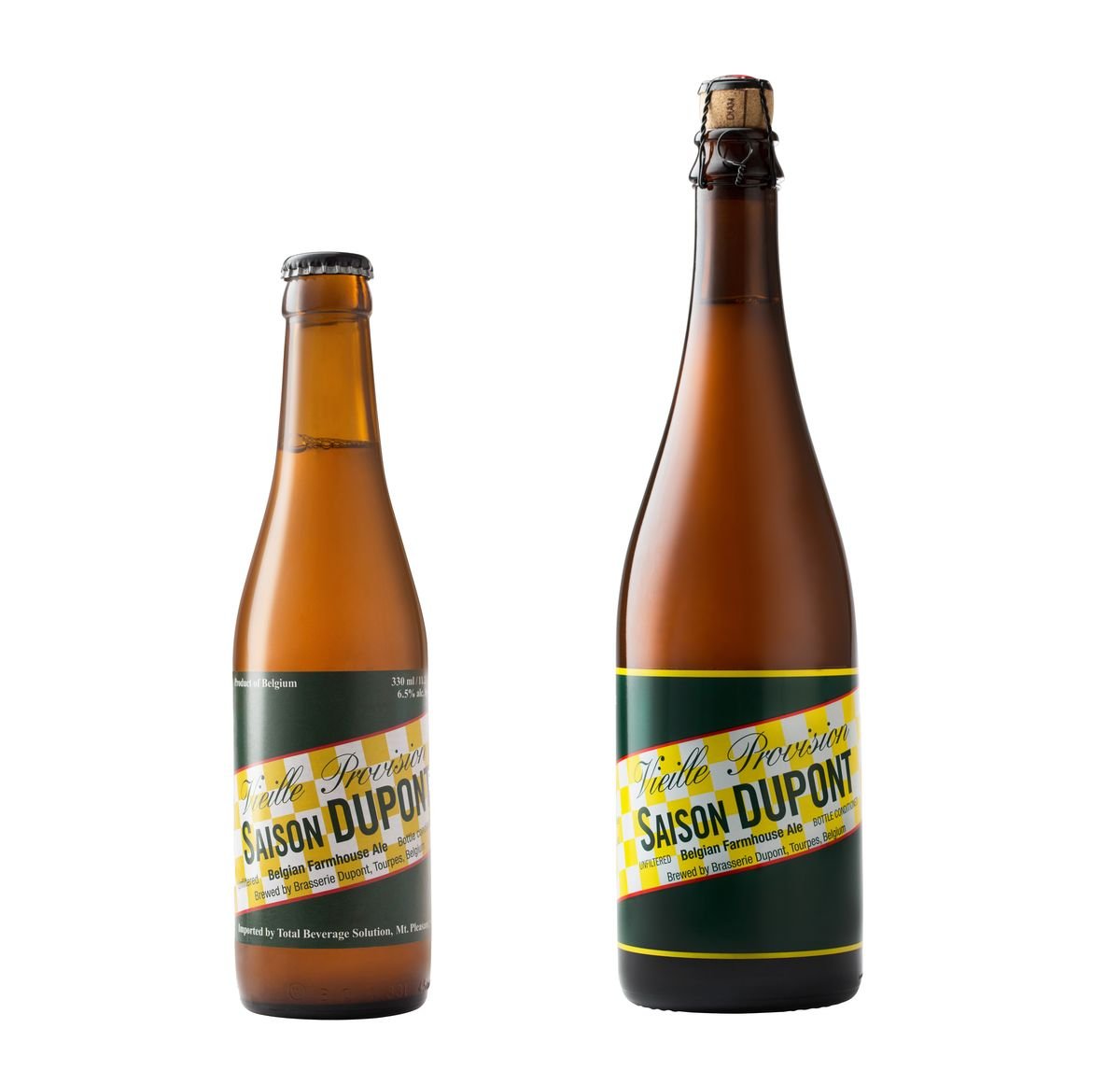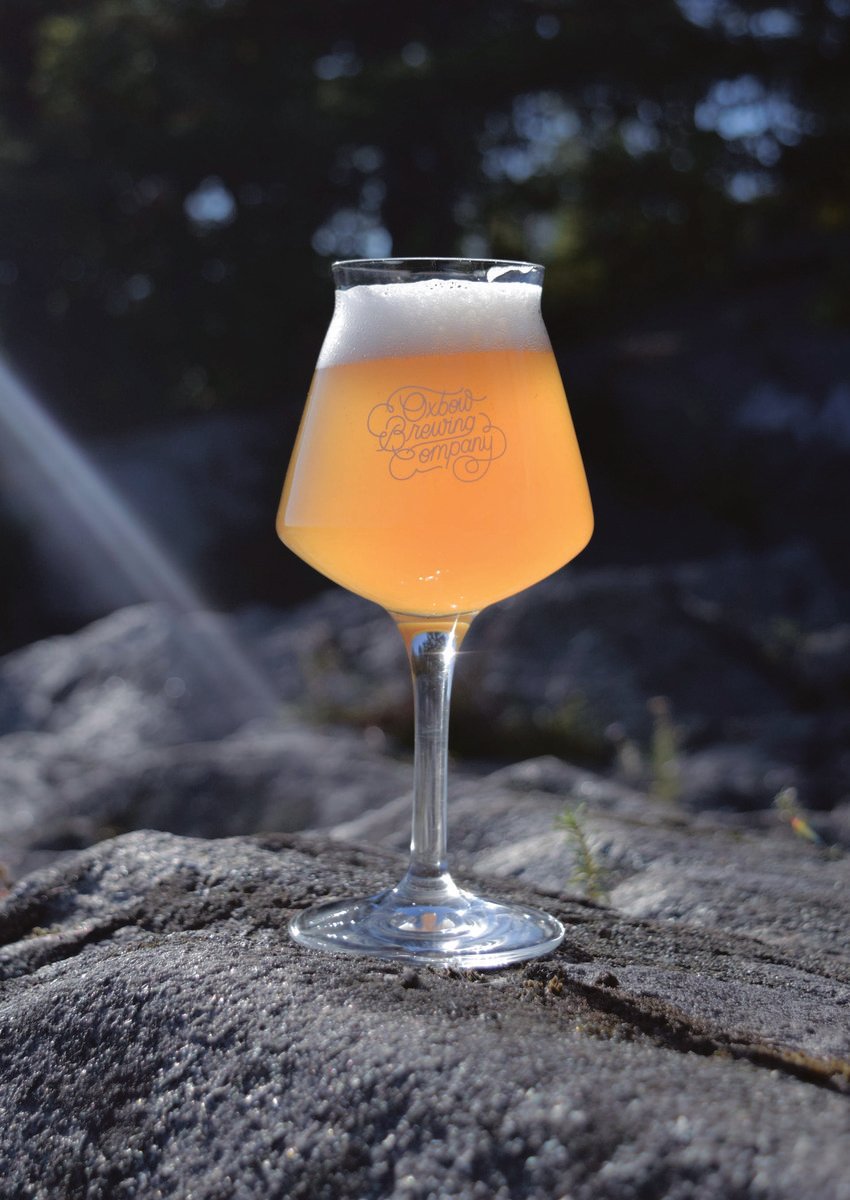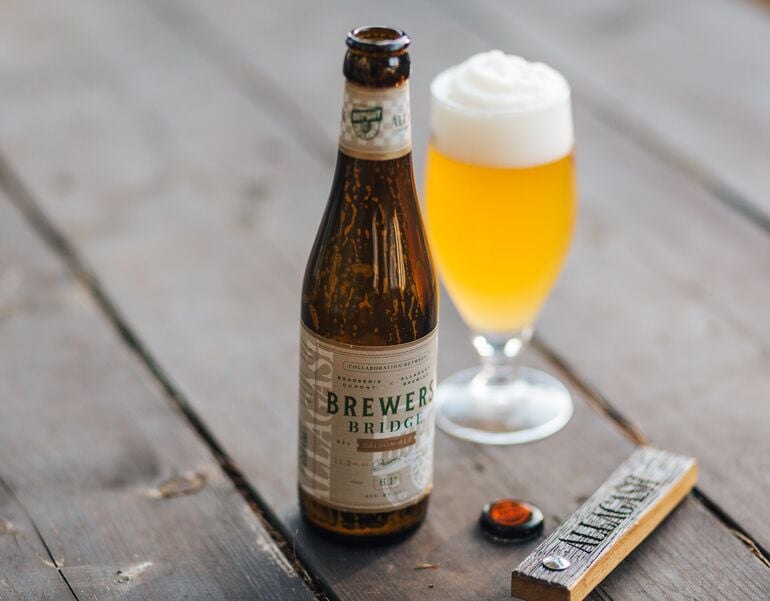Start 14-Day Trial Subscription
*No credit card required

The Difference Between Saison and Farmhouse Ale
Interpersonal categorizations can imprison and divide, but beer categories incite exploration and fully engage connoisseurs in facets beyond flavor. Farmhouse Ale and Saison, two quirky, interconnected styles, are a perfect example of this phenomena, where classifications themselves invite us to ponder from what farmhouse did these beers arise, what unifies and divides them, and why do they taste the way they do?
What’s the Difference Between Farmhouse Ales and Saison?
Enlivening matters further is the lexical conundrum these two classifications embody: Experts aren't sure they're both styles at all, and if they're even different from each other. For example, the Beer Judge Certification Program says Saisons are, “Often called Farmhouse ales in the U.S., but this term is not common in Europe where they are simply part of a larger grouping of artisanal ales.“
Tim Coleman, Beer Market Manager at Total Beverage Solution, also suggests that the term is an Americanism, “I'm not sure there is a difference between ‘Saison" and ‘Farmhouse Ale.’ The difference is where the beer is brewed, rather than the style. The term Farmhouse Ale is mostly used in America. In Europe, it would be obvious where the beer was brewed, so the specific style is more important.”
Saison – A Member of the “Farmhouse Family”
To provide a definitive answer to the question: All Saisons are Farmhouse Ales, but not all Farmhouse Ales are Saisons. The term “Farmhouse Ale” is an overarching classification, encompassing and unifying many unique substyles of beers, including “funky” styles like Saison, Sahti, Gotlandsdricka, Biere de Garde, and others. Think of the Farmhouse ales as a family – with each member sharing two vital family traits: flavor and origin.
Common Flavors of the “Farmhouse Family”
According to Michael Fava, Head Brewer at Oxbow Brewing Company, many of the beers in the “family” have similar IBU, ABV and character.
Fava says: “I think of farmhouse ales as the umbrella – with many styles underneath. If you make a flavor graph with a blind tasting, all the styles have similarities: blond-gold color, hop forward bitterness, a dry subtle tartness. That bitterness and tartness are key. Imagine a thirsty farmhand. You'd have wanted a bone dry, bitter beer to quench your thirst. There should be no residual sugar. Generally, they have higher carbonation as well. Farmhouse Ales often have a distinct minerality. There is no big malt, to mask it.”

Saison and the Common Agricultural Origin Farmhouse Ales
The humble, agricultural roots of Saison are a lens through which to view the common origin of all the beers in the Farmhouse Family. As luck would have it, I met with Olivier Dedeycker, 4th-generation owner of Brasserie Dupont, for a pint at my local, Novare Res, and a brief history lesson. Dupont produces the definitive example of the style, Saison Dupont, which is likely the first commercial example of Saison drunk in America.
According to Dedeycker, “We were at first a farm in 1759, and then, we became a brewery in 1844. But of course, we brewed before this! At this time, in the southern Part of Belgium, many of the farms had their own breweries. In the winter, they took the barley and made with it a malt, and they brewed it into a beer during the cold months. These beers, made in the winter, were drunk in the summer to refresh the workers, working hard in the fields. They have a low ABV, and quite the correct bitterness. They are designed to refresh.”
Saison: A Versatile Style for the Modern Era
Despite humble origins as a pre-industrial Gatorade designed to refresh Belgian farmhands, Saison is experiencing a resurgence. Dedeycker feels that this resurgence is due more to heritage than function, and opines, “My opinion is that this is due to the history of this kind of beer. A lot of people want to revisit tradition and experience a flavor from an old, simple time. Even this is true in Belgium. Before, we had perhaps 8 breweries for Saison, and now, there are more than 40!”
According to Tim Coleman of Total Beverage Solution, the simple flavor of Saison itself, rather than the history it embodies, is motivating increased consumption. He says, “I would add, there are so many weird and wonderful beer styles. It's nice to come back to the starting point, rather than those that crazy American brewers have tried to reinvent.”
As a beer reviewer and writer, I appreciate the simplicity and versatility of Saison. Of course, I’ll line up to try the newest triple dry-hopped sour IPA, but when I want to relax, or when I’m looking for a beer to pair with food, I often reach for a Saison. With lower IBU, Saison pairs wonderfully with spicy food, refreshing the palate while providing a more robust counterpoint than a more quenching style like a Pilsner.
Farmhouse of the Future: Collaborations and Interpretations
Saison was born in Belgium and emigrated to America, where brewers are riffing on this style and adding new members to Farmhouse family. In my home state of Maine, Oxbow Brewing has led a resurgence of the style, with a profusion of dry-hopped, barrel aged Farmhouse ales, some of which are powered by multiple strains of yeast and bacteria.
Oxbow’s Head Brewer Michael Fava emphasizes that, despite some modern bells and whistles, producing Farmhouse Ale is all about embracing simple origins. “We have an old barn at the end of a dirt road. We don't have city water. We have a well. We don't have as sewer system. Founder Tim Adams was drawn to embrace our rural setting and the influence it has on our beer. Being in such a challenging location – each drop of beer means so much to us. Brewing in a big city, you don't have to consider waste water management.”
According to Fava, simple origins have a hidden advantage: increased shelf life, “We make styles that have longevity in a way that's sustainable. We're not chasing the ‘fresh train.’ We’re making beers that taste great for a long time. They're so hard to make – we want them to last!”
New brewers aren’t the only ones driving innovation with these venerable styles. Dedeycker, whose brewery is the oldest commercial producer of Saison, traveled to Maine from Belgium to promote a collaboration brew with Allagash Brewing, called “Brewers Bridge.” This beer is a true fusion of past and present, brewed with yeast and malt from Allagash, and hops from both Belgium and the U.S. The beer was brewed in Belgium, with a recipe created by both Allagash and Brasserie Dupont.
As Dedeycker, Coleman and I sat, talking of times past and yet to come, we sipped an old-world style of beer, re-made in a collaboration with a new-world brewer. The Saison we drank is more than a bridge between brewers. Saison is a bridge between the past and the present – a drinkable time machine that craft beer connoisseurs can use to revisit history, exist in the present, or receive inspiration from the future!
Saison Tasting Workshop: The Old, The New, And the in-Between
Beer: Saison Dupont
Brewery: Brasserie Dupont, Tourpes, Belgium
ABV: 6.5 %
Format Sampled: 750 ml corked bottle
Tasting Notes: As one of the first commercially available Saison style beers, the Dupont is the “standard setting Saison,” renowned for a balance of flavor and subtlety. It pours a hazy, luminous yellow with a massive, sturdy head of brilliant white foam. Aroma has pear, ripe fig, warm hay and soil. The initial flavor has green apples, faint vinegar and sharp, vegetal hops. As the flavor develops and the beer warms slightly, a hint of cracker-crisp malt rises, and the apple character becomes more cooked than green. The texture is light, silky and spritzy. The finish has a definite cider note, and a dry refined minerality.
Beer: Brewers Bridge
Brewery: Brasserie Dupont and Allagash Brewing
ABV: 6.1%
Format Sampled: 11.2 oz capped bottle
Tasting Notes: Brewers Bridge is a collaboration, a meeting of leading brewers from both the new and the old world. It’s designed to showcase both the refined history, and vibrant future of Saison. It pours a
cloudy yellow, with a lace of off-white head. Aroma has bountiful clove, orange peel and wheaty pasta water. The initial flavor has a surprising pop of bitterness, a brief flash of citrus and pine. After the hoppy salute, a chorus of toasty, bready malt arises as the dominant flavor, offset by a hint of apple cider vinegar. The mouthfeel is light, and effervescent and refreshing. The light malt character develops more in the aftertaste, joined by a pleasantly bracing sourness.
Beer: Arboreal
Brewery: Oxbow Brewing, Newcastle, Maine
ABV: 8.5%
Format Sampled: 500 ml capped bottle
Tasting Notes: This is an example of a “modern” Farmhouse Ale, where Oxbow has taken the template of the Saison style, and pumped it up with backwoods Yankee ingenuity. The Arboreal pours a dark amber with almost no head. The aroma has apple cider vinegar, black cherry, wet wood and damp soil. My first sip is face-scrunchingly sour, with concentrated apple, caramel, balsamic vinegar and stone fruit. There is a significant barrel character, with wet mahogany, and the damp mushroom funk of a quiet, stone basement. The aggressive sourness and significant ABV are all new world, but the barrel character is a nod to the quiet, contemplative qualities of the old world.




